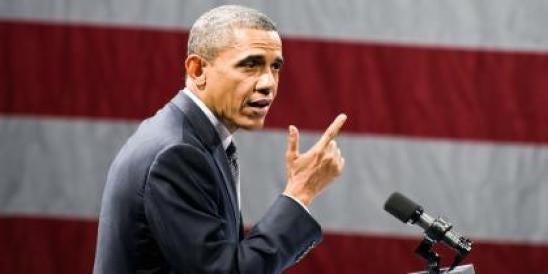The U.S. federal court system is very busy these days managing the Obama administration’s efforts to develop and implement the nation’s environmental policy on Climate Change. On February 9, 2016 the U.S. Supreme Court weighed in on the pending litigation of the Clean Power Plan before the U.S. Court of Appeals for the District of Columbia. The U.S. Supreme Court’s order was a brief one paragraph which reads, “The application for a stay submitted to The Chief Justice and by him referred to the Court is granted. The Environmental Protection Agency’s “Carbon Pollution Emission Guidelines for Existing Stationery Sources: Electric Utility Generating Units, “ 80 Fed. Reg. 64,662 (October 23, 2015), is stayed pending disposition of the applicants’ petitions for review in the United States Court of Appeals for the District of Columbia Circuit and disposition of the applicants’ petition for a writ of certiorari, if such writ is sought. If a writ of certiorari is sought and the Court denies the petitions, this order shall terminate automatically. If the Court grants the petition for a writ of certiorari, this order shall terminate when the Court enters its judgment. Justice Ginsburg, Justice Breyer, Justice Sotomayor, and Justice Kagan would deny the application.”
The U.S. Supreme Court’s order has inspired many expletives to include: fascinating, unprecedented, harmful, welcome, rare, and extraordinary. Elbert Lin, Solicitor General of the Office of the West Virginia Attorney General describes the Court’s action as none of the above. Lin clarified that the Court on many occasions makes quick and forceful decisions. He speaks from experience, as Lin is a former law clerk at all three levels of the federal judiciary. Lin worked for U.S. Supreme Court Justice Clarence Thomas, U.S. Court of Appeals Judge William H. Pryor Jr., and Senior U.S. District Judge Robert E. Keeton. Lin is heading the Clean Power Plan litigation before the D.C. Circuit coordinating several states’ challenge in the case West Virginia, et al. v. U.S. Environmental Protection Agency, No. 15-1353. Lin was a speaker on February 10, 2016 during an ABA webinar discussing the litigation. The webinar had been scheduled before the stay was issued. Lin and others were candid as they absorbed the impact of the order issued the night before.
Elbert Lin described the procedure for seeking a stay of the U.S. Supreme Court. He reviewed the standard for issuing a stay which includes the determination of: likelihood of success on the merits; irreparable harm, and balance of the equities and public interest. Based upon the briefs submitted, the entire court reviewed the matter. The implication is that 5 out of 9 Justices believe their review of an appeal to the Clean Power Plan rule would likely result in success on the merits by the petitioner challengers.
The second speaker was Vickie Patton, General Counsel of the Environmental Defense Fund. She expressed great concern that the U.S. Supreme Court has NEVER issued such stay in any environmental regulatory case. She marveled that the US Supreme Court was issuing a stay on a matter that had not been fully reviewed by the lower court. She expressed concern that the stay was issued only a few days after having received the positions of the parties. (Representations by parties on Friday, February 5 – Order issued on Tuesday, February 9) Elbert Lin reminded her he had contacted the Chief Justice on January 21, 2016 the date upon which the D.C. Circuit denied the Motion to Stay about the States’ plans to submit an application for stay. She also observed the stay was issued the night of the first Presidential primary.
Vickie Patton reminded the audience that there was still a great need to press forward with work to meet the CPP. The litigation would be resolved soon with oral argument set for June 2, 2016 and there were many petitioner supporters of the CPP. Patton noted that many of the very same power companies that are petitioners in this action support and are investing in sustainable energy projects.
In response to a comment by Patton that the issue being litigated is critical to protecting Americans and American families from the serious effects of carbon pollution, Lin articulated that his state clients’ concerns were not about environmental policy. Rather, they are of two themes: CAA delegation of authority and procedural. First, he explained the dilemma of the scope of the delegated authority to EPA relative to 111(d) and 112 as directed by the CAA. He rejected Patton’s characterization that the Court had resolved the scope of 111(d) relative to CO2. He expressed concern that the CPP BSER using the Building Blocks 2 and 3 was generation shifting to natural gas and renewable energy, not a traditional CAA source control program. He noted the procedural concern that there was not an adequate relationship between the proposed rule and the final.
The third speaker on the ABA webinar was a practitioner not involved in the litigation, Art Harrington. He discussed implementation issues. He acknowledged that some states may choose to do nothing during the stay to after the U.S. Supreme Court decides the matter. Harrington acknowledged the 5 Justices support for the stay was a bad sign for the CPP as it is written. He cautioned that it is not appropriate to do nothing, even though the Supreme Court was implying they would be ready to reject the CPP. Harrington questioned what this CPP stay did to the Paris Accord and the expectations of the international community. He discussed the market incentives to move to natural gas and renewables in the form of tax credits. Harrington opined the continued decline in natural gas prices would naturally drive the generation of electricity away from coal. He cited recent studies showing significant coal reductions to date. Harrington reminded the audience that the states have laws on the books that will continue to reduce reliance on coal. These states in his thinking were ahead and would be well advised to keep track of measurable and verifiable emissions reductions for reference with future emission reduction credit programs. He believed utilities must still implement emissions reductions. As the power generation industry continues to experience energy shifting and reductions in emissions they too should maintain diligent records of their accomplishments to demonstrate credit for reductions.
The past three days have been busy as the interested parties (who include the nation and our international partners) assess what next steps need to be taken. One theme is clear, the discussion of managing Climate Change in the United States is as robust as before the stay of the Clean Power Plan. Everyone has an opinion and idea as to what should be done next. Although a stay was issued, there is no indication that the matter of climate change regulation is now stopped.




 i
i


